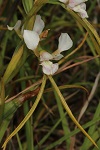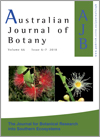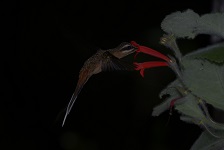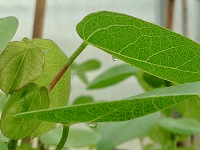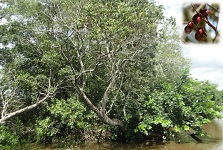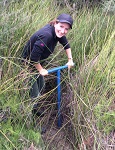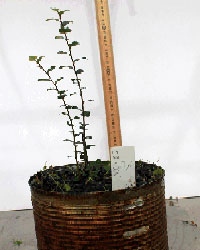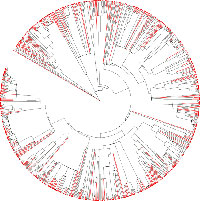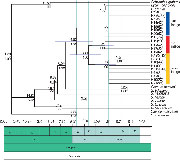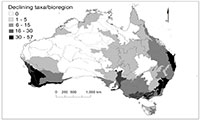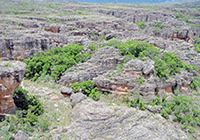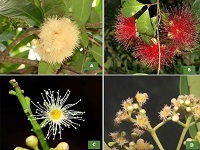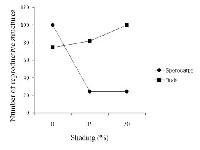Australian Journal of Botany
Volume 66
Numbers 6 & 7 2018
It is important to assess the success or failure of plant species reintroductions. Results supported the hypotheses that state transition, annual survival, and seed production rates in a reintroduced Diuris fragrantissima population were equivalent to those in the wild population. This case study provides information that will inform the development and improvement of reintroduction methods for D. fragrantissima and other terrestrial orchid species, and highlights the difficulties in determining the ultimate success or failure of a reintroduction.
In this paper we explore the reproduction and pollinator specificity of Sinningia occurring in Brazilian semi-deciduous forests. The presence of particular flower features influence the occurrence of pollination by specific pollen vectors in deterrence of illegitimate visitors. This discovery provides new insights on the specificity in Neotropical habitats, and sheds light on the evolution of floral rewards and pollination mechanisms within this diverse group of plants.
Extrafloral nectar attracts ants, whose presence provides protection for the plant against herbivores. Extrafloral nectar is a critical component of many plant–insect interactions worldwide and may be affected by rising levels of atmospheric carbon dioxide because it is a direct product of photosynthesis. In this study, elevated carbon dioxide did not affect the total volume or composition of extrafloral nectar, but there was a change in the pattern of extrafloral nectar production within plants which could alter the foraging patterns of ants and their defence of plants.
Ormosia arborea is a native tree species commonly found in Brazilian forest formations, especially in the semideciduous seasonal forest and riparian zones being recommended for the restoration of plantations within degraded areas and found at the edge of rivers. The work assessed the effects of different flooding and post-flooding periods on the growth of seedlings. The species presents potential for survival in temporarily flooded areas, without visible damage for up to 60 days of flooding and also during the post-flooding period.
Understanding the effects of water regime on woody wetland plants is essential to managing their persistence. We tested, for Melaleuca squarrosa and Leptospermum lanigerum, the effects of flooding on seed germination, seedling establishment and growth, and adult plant condition. Seeds of both species germinated underwater, but flooding reduced seedling establishment and growth for both species, and the condition of adult M. squarrosa. Prolonged flooding in wetlands is likely to limit woody plant recruitment and be deleterious to the maintenance of less flood-tolerant species.
The Tasmanian highlands have vegetation mosaics in which the Gondwanan vegetation is infrequently burnt and considered fire sensitive and the characteristically Australian vegetation is more frequently burnt and considered more fire tolerant. We tested this assumption by experimentally burning seedlings from tree species representative of the mosaic. We found a surprising vulnerability of all species to flame exposure, indicating that increasing fire frequency resulting from climate change could alter vegetation patterns.
The subtropical rainforests of the Sunshine Coast are relatively understudied but their importance for conservation has recently been highlighted. We measured phylogenetic diversity at a fine scale to identify areas of high diversity and dissimilarity across the Sunshine Coast. The Sunshine Coast was found to be phylogenetically even, consistent with the identification of refugia. The Blackall Range was identified as a local centre of diversity.
The weed Solanum elaeagnfolium has a range of origin that is not yet well known. It invades many countries, and exhibits polyploidy in South America. Chloroplast DNA sequences revealed three lineages; one in North America, and two in South America, where they developed independent events of recurrent polyploidy. Deep divergences between lineages indicated that South American populations did not originate from a recent colonisation.
Thousands of Australian plants are listed as being at risk of extinction, but there is no clear picture of their population trends, distribution, habitat preferences and major threats. Based on 125 expert interviews, 418 of 1135 threatened taxa assessed have documented, suspected or projected continuing declines; of these, 55 are considered at high risk of extinction. Declining and at risk species are concentrated in a relatively small number of regions and habitats, and identification of these paves the way for targeted recovery efforts.
Fossil pollen and spores from north-western Australia provide the first record of plants and plant communities occupying that region during the Paleogene c. 60 to 23 million years ago. The dominant woody taxon is Casuarinaceae, and rare taxa include genera now restricted to temperate rainforest in New Guinea, New Caledonia, New Zealand and/or Tasmania. No evidence for Laurasian rainforest elements was found.
Syzygium is a tropical plant genus having rich diversity in South Asia, Australia, and Pacific Oceanic Islands. Although Australian species have received greater attention from pollination and reproductive biologists, information on Indian species are missing. We studied pollination biology of four endemic species of peninsular India, and found that the flower morphological traits predict pollination syndrome and breeding system.
Salvinia auriculata is an aquatic fern that can produce biomass exceeding 200 t ha–1 in 10 days, causing problems in aquatic ecosystems around the world. We tested the shading technique to evaluate the effect for decreased light on the biomass and number of sexual and asexual reproductive structures. Increased shade reduced biomass and sexual reproduction, but resulted in greater investment in clonal growth, allowing it spread in the water. This study illustrates why decisions makers must consider the species biology before applying management techniques, reducing costs and waste of time.
